Understanding the Different Types of Hair Loss A Guide for Men and Women
Understanding the Different Types of Hair Loss A Guide for Men and Women
Are you losing more hair than usual and desperately searching for answers? Fear not! Whether you’re a man or a woman, understanding the various types of hair loss is key to finding effective solutions. From genetics to lifestyle factors, this comprehensive guide will unravel everything, equipping you with the knowledge needed to tackle hair loss head-on. So, grab your magnifying glass and join us on this enlightening journey as we demystify the world of follicle woes and empower both men and women in their quest for luscious locks!
Introduction to Hair Loss
Hair loss is a common problem that affects millions of men and women worldwide. It can be caused by various factors such as genetics, lifestyle, medications, hormonal changes, and medical conditions. While it is more commonly associated with aging, hair loss can also occur at any age and can have a significant impact on an individual’s self-esteem and confidence.
The average person has about 100,000 hairs on their scalp, with each hair strand having a lifespan of 2-7 years. Hair loss occurs when this natural growth cycle is disrupted or when the hair follicles are damaged. There are different types of hair loss depending on the cause and location of the shedding.
One of the most common types of hair loss is male or female pattern baldness. This inherited condition affects both men and women but has different patterns for each gender. In men, it typically starts with a receding hairline and thinning at the crown, eventually leading to complete baldness in some cases. Women, on the other hand, experience overall thinning of their hair without a distinct pattern.
Another type of hair loss is alopecia areata, which is an autoimmune disorder where the body’s immune system attacks its hair follicles causing sudden round patches of baldness. This condition can also progress to total scalp or body hair loss known as alopecia universalis.
Telogen effluvium is temporary shedding that occurs after a significant physical or emotional stressor such as childbirth, surgery, severe illness, or extreme weight loss. This type of hair loss usually resolves itself within six months without treatment.
Lifestyle factors like diet and styling practices can also contribute to certain types of hair loss. Poor nutrition lacking essential vitamins and minerals can weaken the hair follicles resulting in excessive shedding over time. Excessive heat from hot tools like blow dryers and flat irons can damage the follicles leading to breakage and thinning.
Interestingly enough, hair loss can also be a side effect of certain medications such as chemotherapy drugs and antidepressants. In these cases, the hair usually grows back once the medication is discontinued.
Medical conditions like thyroid disorders, PCOS (polycystic ovary syndrome), and scalp infections can also cause hair loss. Treating the underlying condition may help stop or reverse this type of hair loss.
Understanding the different types of hair loss is crucial in determining the best course of action for treatment. Identifying the cause and addressing it early on can help prevent further shedding and promote healthy hair growth. If you are experiencing excessive or sudden hair loss, it is always recommended to consult with a healthcare professional for proper diagnosis and treatment options.
Causes of Hair Loss in Men
Hair loss is a common problem that affects both men and women, but it tends to be more prevalent in men. There are various causes of hair loss in men, ranging from genetic factors to lifestyle choices. Understanding these causes can help individuals better manage their hair loss and potentially prevent it from worsening.
One of the primary causes of hair loss in men is genetics. Male pattern baldness, also known as Androgenetic Alopecia, is the most common type of hair loss in men. It is an inherited condition where hair follicles become sensitive to a hormone called dihydrotestosterone (DHT), causing them to shrink and eventually stop producing new hairs. This type of hair loss typically starts with receding hairline at the temples and thinning on the crown, eventually leading to complete baldness in some cases.
Apart from genetics, certain medical conditions can also cause hair loss in men. These include thyroid disorders, scalp infections like ringworm or folliculitis, autoimmune diseases like alopecia areata, and nutritional deficiencies such as iron deficiency or protein deficiency.
Stress can also contribute significantly to male pattern baldness or exacerbate other types of hair loss. When individuals experience stress or trauma, their body releases a hormone called cortisol that disrupts the normal growth cycle of hairs, resulting in excessive shedding and subsequent thinning.
Certain medications used for treating health conditions such as cancer, arthritis, depression, or heart problems have also been linked to temporary hair loss in some individuals. Radiation therapy for cancer treatment can damage healthy cells along with cancer cells leading to diffuse scalp thinning.
Another important factor contributing to male pattern baldness is age – as men get older; they tend to produce less testosterone which plays an essential role in maintaining healthy hair growth. This decrease in testosterone levels coupled with increased sensitivity towards DHT makes older men more prone to experiencing severe forms of male pattern baldness.
Lifestyle choices can also play a role in hair loss for men. Smoking, excessive alcohol consumption, and poor nutrition can contribute to the weakening of hair follicles and lead to thinning and shedding of hairs.
While male pattern baldness is primarily caused by genetics, other factors such as medical conditions, stress, medication use, age, and lifestyle choices can also contribute to hair loss in men. Understanding these causes can help individuals take necessary precautions and seek appropriate treatment options to manage their hair loss effectively.
– Genetics and Male Pattern Baldness
Genetics plays a major role in patterns of hair loss, particularly male pattern baldness. Also known as androgenetic alopecia, this type of hair loss involves a specific genetic predisposition that causes the hair follicles to become sensitive to dihydrotestosterone (DHT), a hormone derived from testosterone.
Men who are genetically predisposed to male pattern baldness have hair follicles that are more susceptible to the effects of DHT. This hormone binds to receptors on the scalp, causing the hair follicles to shrink and produce thinner, shorter hairs. Over time, these follicles may stop producing hairs altogether, leading to complete baldness in certain areas of the scalp.
One key factor in understanding male pattern baldness is the inheritance pattern. According to research, this condition has a strong hereditary component – meaning if your parents or grandparents experienced hair loss, you are more likely to develop it as well. Studies have shown that genetics account for up to 80% of cases of male-pattern baldness.
There are also specific genes involved in male pattern baldness, with variations in these genes being associated with an increased risk for developing it. One such gene is called the Androgen Receptor Gene (AR), which codes for proteins that bind with DHT and influence its effect on hair growth.
While genetics plays a significant role in male pattern baldness, it does not necessarily mean that all men with a family history will experience it as well. It simply means they have an increased likelihood compared to those without any family history.
It’s important to note that while genetics may be the primary cause of male pattern baldness, other factors can contribute as well. These include age, hormonal imbalances, stress levels, and certain medications or medical conditions.
Understanding how genetics influences male-patterned baldness can help individuals identify their risk factors for developing this condition and take appropriate preventative measures. While there is no known cure for male pattern baldness, there are various treatments and management strategies available that can slow down or even reverse its progression. Consult with a healthcare professional to determine the best course of action for your situation.
– Hormonal Imbalances
Hormonal imbalances can have a major impact on hair loss for both men and women. Our hormones play a crucial role in regulating many bodily functions, including hair growth. Therefore, when there is an imbalance in hormone levels, it can lead to various types of hair loss.
One of the most common hormonal causes of hair loss is Androgenetic alopecia, also known as male or female pattern baldness. This condition occurs when the male hormone dihydrotestosterone (DHT) affects the hair follicles on the scalp, causing them to shrink and eventually stop producing new hairs. In men, this usually results in a receding hairline or bald spot at the crown of the head. Women with androgenetic alopecia experience thinning hair all over their scalp.
Another hormonal cause of hair loss is polycystic ovary syndrome (PCOS). This condition affects women’s hormone levels by increasing testosterone production while simultaneously decreasing estrogen levels. As a result, PCOS can cause excessive facial and body hair growth while also leading to thinning on the scalp.
Similarly, thyroid disorders such as hypothyroidism or hyperthyroidism can also contribute to significant changes in our bodies’ hormone levels. These conditions affect the production of thyroid hormones that help regulate metabolism and other bodily processes. When these hormones are out of balance, it can disrupt normal hair growth cycles and lead to noticeable thinning or even patchy bald spots on the scalp.
Stress can also play a significant role in our hormone levels and overall health. When we experience chronic stress, our bodies produce higher levels of cortisol and lower amounts of healthy hormones like serotonin and dopamine. This imbalance not only impacts our mood but can also affect physical aspects such as blood flow to our scalp and disrupt normal hair growth patterns.
In some cases, medications that alter hormone levels may also contribute to temporary or permanent hair loss. Birth control pills that contain high levels of progestin may cause hair loss in some women, as can certain medications for thyroid disorders or mood conditions.
Understanding the potential impact of hormonal imbalances on hair loss is crucial in identifying and treating the underlying cause. Consulting with a medical professional to address any hormonal issues and finding appropriate solutions can help restore healthy hormone levels and promote optimal hair growth. Additionally, practicing stress management techniques such as exercise, meditation, and therapy can also aid in maintaining balanced hormones and reducing the risk of hair loss.
– Stress and Nutritional Deficiencies
Stress and Nutritional Deficiencies can also play a significant role in hair loss. The relationship between the two is often intertwined, making it difficult to determine which one is causing hair thinning or shedding.
Chronic stress can lead to a condition called Telogen Effluvium, where hair follicles prematurely enter into the resting phase of their growth cycle. This causes an increase in hairs that fall out daily, resulting in noticeable hair thinning. Additionally, high levels of stress can also disrupt hormones and decrease blood flow to the scalp, further contributing to hair loss.
Similarly, nutritional deficiencies can also hurt hair health. A diet lacking essential vitamins and minerals such as iron, zinc, biotin, and vitamin D can weaken the hair shafts and cause them to become brittle and prone to breakage. This results in visibly thinner-looking hair over time.
Furthermore, certain medical conditions such as thyroid disorders and autoimmune diseases can lead to both stress and nutritional deficiencies, thereby exacerbating hair loss symptoms. Therefore, it is crucial to address any underlying health issues that may be contributing to your hair thinning.
Some key nutrients that support healthy hair growth include protein-rich foods like eggs, lean meats, fish, legumes, nuts, and seeds; green leafy vegetables containing iron; citrus fruits high in vitamin C; fatty fish loaded with omega-3 fatty acids; and whole grains providing zinc for strong strands.
In addition to incorporating these nutritious foods into your diet, managing stress levels through relaxation techniques such as meditation or yoga is vital for maintaining optimal overall health – including healthy locks!
If you suspect that stress or nutritional deficiencies may be playing a role in your hair loss woes but are unsure of its root cause or cannot make sufficient dietary changes alone – consult your healthcare provider for guidance. They may recommend supplements like biotin or iron if needed. However – remember that moderation is key when supplementing! Be sure to follow recommended dosages, and as always – seek professional medical advice before making any dietary changes or taking supplements.
Stress and nutritional deficiencies can greatly impact the health of your hair. Making lifestyle changes such as managing stress levels and incorporating nutrient-rich foods into your diet can help promote healthy hair growth and prevent further hair loss. It is essential to address these factors alongside other treatments to achieve optimal results in combating hair thinning.
– Medications and Medical Conditions
Medications and Medical Conditions can play a major role in causing hair loss. It is important to understand how certain medications and medical conditions can affect your hair growth.
Some medications, such as chemotherapy drugs used to treat cancer, can cause hair loss by targeting rapidly dividing cells in the body. Hair follicles are among these fast-growing cells and thus, can be affected by this type of medication.
Other prescription medications that have been linked to hair loss include blood thinners, antidepressants, high blood pressure medications, and even birth control pills. These medications can disrupt the normal cycle of hair growth and lead to temporary or permanent hair loss.
In addition to medication use, certain medical conditions can also contribute to hair loss. Thyroid disorders are a common example of a condition that affects hair growth. Both an overactive thyroid (hyperthyroidism) and an underactive thyroid (hypothyroidism) can lead to changes in hormone levels which may result in thinning or shedding of the hair.
Autoimmune diseases like alopecia areata and lupus can also cause sudden or gradual hair loss due to the body’s immune system attacking its healthy cells, including those responsible for producing new hairs.
Furthermore, hormonal imbalances caused by conditions such as polycystic ovary syndrome (PCOS) or pregnancy can disrupt the natural cycle of hair growth leading to excessive shedding or patchy baldness.
It is important for individuals experiencing any form of abnormal or sudden hair loss to consult with a healthcare professional as soon as possible. They will be able to assess your overall health and determine whether any underlying medical conditions may be contributing to your hair loss.
In some cases, adjusting medications or treating underlying health issues may help improve the condition of one’s scalp and stimulate new hair growth. However, it is important not to stop taking prescribed medication without consulting with a doctor first.
Understanding the potential impact of certain medications and medical conditions on hair loss is essential for prevention and proper treatment. Seeking professional medical advice can help identify the root cause of hair loss and determine the best course of action to maintain a healthy head of hair.
Types of Hair Loss in Men
Hair loss is a common concern for many men, with statistics showing that it affects approximately 50% of men over the age of 50. While it may seem like a simple issue, there are actually several types of hair loss that can affect men in different ways.
1. Male Pattern Baldness:
This is the most common type of hair loss in men and is also known as Androgenetic Alopecia. It is caused by a combination of genetic and hormonal factors, where the hormone dihydrotestosterone (DHT) causes miniaturization of the hair follicles, making them thinner and shorter until they eventually stop producing hair growth altogether.
Male pattern baldness typically starts with a receding hairline at the temples and thinning on the crown, eventually leading to complete baldness in these areas. This type of hair loss usually occurs in a predictable pattern and can be inherited from either side of the family.
2. Telogen Effluvium:
Unlike male pattern baldness, telogen effluvium is temporary and reversible. It occurs when there is an interruption in the normal cycle of hair growth where an increased number of hairs enter their resting phase (telogen phase), causing excessive shedding.
Telogen effluvium can be triggered by various factors such as stress, illness, nutritional deficiencies, hormonal changes, or medications. The good news is that once the underlying cause has been addressed, hair growth will resume within 6-9 months.
3. Alopecia Areata:
Alopecia areata is an autoimmune disorder that causes patchy hair loss on different parts of the scalp or body. It occurs when your immune system mistakenly attacks your own hair follicles, causing them to shrink and produce abnormal hairs that fall out easily.
While there isn’t a specific cause for this type of alopecia, it can often be triggered by severe stress or trauma to the body. In some cases, hair may regrow on its own, but it can also result in permanent hair loss.
4. Traction Alopecia:
Traction alopecia is a type of hair loss often seen in men who frequently wear tight hairstyles such as braids, ponytails or cornrows. The constant pulling and tension on the hair follicles can cause them to become damaged and eventually stop producing hair growth.
Treatment for traction alopecia involves avoiding tight hairstyles and allowing the affected area to rest and recover. In severe cases, hair transplants may be necessary to restore hair growth.
Understanding the different types of male hair loss is crucial for managing expectations and seeking appropriate treatment. If you are experiencing excessive hair loss or thinning, it is recommended to consult with a healthcare professional for an accurate diagnosis and personalized treatment plan.
– Male Pattern Baldness (Androgenetic Alopecia)
Male pattern baldness, also known as androgenetic alopecia, is the most common form of hair loss in men. It affects approximately 50 million men in the United States alone, making it a prevalent concern for many individuals. In fact, by the age of 50, about 85% of men will experience some degree of hair thinning or balding.
This type of hair loss is caused by a genetic predisposition to sensitivity to DHT (dihydrotestosterone), a hormone derived from testosterone. DHT causes miniaturization of hair follicles, leading to thinner and shorter hair growth over time. This process typically begins at the temples and crown of the head and gradually spreads outwards.
One of the key features of male pattern baldness is its predictable pattern. It follows a distinct progression known as the Norwood scale, which includes seven stages ranging from minor temple recession to complete baldness on top, with only a horseshoe-shaped fringe remaining on the sides and back.
In addition to genetics and hormonal factors, there are other potential contributors to male pattern baldness. Age can play a role in its development as well; as men grow older, their natural production of testosterone decreases while their levels of estrogen increase – causing an imbalance that may contribute to further hair thinning.
Stress has also been linked to increased levels of DHT in some studies. Additionally, certain medications may have side effects that include accelerated or worsened hair loss.
While male pattern baldness is primarily thought of as an issue affecting older adults, it can also occur at any age post-puberty due to hereditary factors. Some teenagers may experience early onset male pattern baldness if they have inherited genes for it from their parents.
There are various treatment options available for male pattern baldness depending on individual preferences and concerns – from over-the-counter minoxidil (Rogaine) foam or topical solution to prescription medications, hair transplant surgery, and even low-level laser therapy. These treatments may slow down the rate of hair loss or promote new hair growth.
Male pattern baldness is a common form of hair loss that affects millions of men worldwide. It is associated with a genetic predisposition to sensitivity to DHT and follows a predictable pattern of progression. While it cannot be prevented, there are various treatment options available for those who wish to address their hair thinning or balding concerns.
– Alopecia Areata
Alopecia areata is a type of hair loss that affects both men and women, and it occurs when the immune system attacks hair follicles, leading to patches of baldness on the scalp. This condition usually appears suddenly and can range from small, coin-sized patches of hair loss to more extensive areas of baldness.
The exact cause of alopecia areata is still not fully understood, but it is believed to be an autoimmune disorder where the body mistakenly identifies the hair follicles as foreign invaders and attacks them. This attack on the follicles leads to inflammation, which stops hair growth resulting in temporary baldness. It is not a life-threatening condition, but it can have a significant impact on an individual’s physical appearance and self-esteem.
Alopecia areata can affect people of any age or ethnic group. However, individuals with a family history of autoimmune disorders or those who have certain autoimmune diseases like vitiligo or thyroid disease may be at a higher risk for developing this type of hair loss.
The most apparent sign of alopecia areata is sudden patchy hair loss on the scalp. The affected area may feel smooth or even slightly sensitive to touch. In some cases, people may also experience nail changes such as rough, pitted nails or white spots that appear under the nail bed.
Unfortunately, there is no cure for alopecia areata at this time. However, there are various treatment options available that can help stimulate hair regrowth and manage symptoms. Common treatments include corticosteroids injected into the affected area to reduce inflammation, topical immunotherapy which helps suppress immune response in the scalp skin cells by applying chemicals irritants onto the scalp repeatedly over time; and minoxidil (Rogaine) which promotes blood flow to the affected area thus promoting new hair growth.
In some instances where complete baldness has occurred due to alopecia areata, alternative options such as wigs or hats may be used to help the individual feel more confident and comfortable in their appearance. Thankfully, hair loss due to alopecia areata is usually temporary, and hair regrowth can occur without any treatment.
If you notice any sudden patches of baldness on your scalp or changes in your nail health, it is essential to consult a dermatologist for proper diagnosis and treatment. Early intervention is crucial for successfully managing alopecia areata and preventing further hair loss.
– Telogen Effluvium
Telogen Effluvium is a type of hair loss that occurs when there is a disruption in the hair growth cycle. This condition can affect both men and women and is usually temporary. Telogen Effluvium is characterized by excessive shedding of hair, which occurs abruptly and can be noticed on pillowcases, shower drains, or comb after brushing.
The normal hair growth cycle consists of three phases: anagen, catagen, and telogen. Anagen is the active growth phase where new hair cells are formed, followed by the transition stage called catagen, and finally, the resting phase known as telogen. During the telogen phase, approximately 10-15% of our hairs are in this state at any given time. On average, we shed around 50 to 100 hairs per day during this phase.
In cases of Telogen Effluvium, however, there is a sudden increase in hair entering the resting telogen phase. This results in an increased number of hairs falling out during daily activities such as washing or styling your hair. The most common causes of this condition are physical stressors such as childbirth, high fever, surgery or severe illness like cancer and emotional stressors like divorce or grieving for a loved one. Other factors that can contribute to Telogen Effluvium include changes in hormone levels due to birth control pills or menopause.
The good news about Telogen Effluvium is that it’s usually reversible once the underlying cause has been addressed and resolved. However, it’s important to note that recovery time varies from person to person depending on their circumstances.
To diagnose Telogen Effluvium accurately, your doctor may perform a pull test where they gently tug on several strands of hair at once to see how many come out easily. An excess amount may indicate Telogen Effluvium.
Treatment for this type of hair loss typically involves identifying and addressing the underlying cause. If stress is the culprit, relaxation techniques such as meditation or yoga may be recommended. In cases where there is an imbalance in hormones, hormone replacement therapy may be prescribed.
In addition to treating the root cause of Telogen Effluvium, there are also ways to manage hair shedding and promote healthy hair growth. A well-balanced diet rich in protein, iron, and vitamins can help strengthen your hair follicles. Supplements like biotin have also been found to improve hair thickness and strength.
Telogen Effluvium is a temporary type of hair loss that can affect both men and women due to physical or emotional stressors. With proper identification of the underlying cause and management strategies, this condition is usually reversible with no long-term effects on overall health.
Causes of Hair Loss in Women
Hair loss is a common problem that affects both men and women. While hair loss is more often associated with men, it can also occur in women. Studies have shown that nearly two-thirds of women experience some degree of hair loss by the age of 60. Hair loss in women can be caused by a variety of factors, including genetics, hormonal imbalances, medical conditions, and lifestyle choices.
Genetics plays a major role in hair loss for both men and women. Female pattern hair loss is the most common type of hair loss in women and it is inherited from either the mother or father’s side of the family. This type of hair loss typically starts with thinning at the top and crown of the head, gradually progressing to wider areas on the scalp. Women with this type of hair loss may also notice increased shedding during certain periods such as pregnancy or menopause.
Hormonal imbalances can also trigger hair loss in women. The female body produces various hormones that are responsible for regulating different bodily functions, including hair growth. Changes in hormone levels due to pregnancy, childbirth, birth control pills, or menopause can disrupt the natural cycle of hair growth and cause excessive shedding.
Medical conditions such as thyroid disorders and alopecia areata (an autoimmune disorder) can also lead to hair loss in women. Thyroid disorders can affect hormone levels and cause changes in hair growth patterns while alopecia areata causes patchy bald spots on the scalp.
In addition to genetic predisposition and medical conditions, certain lifestyle choices can also contribute to female hair loss. Excessive stress or emotional trauma can interrupt normal hormonal function and lead to temporary shedding called telogen effluvium. Over-styling or harsh chemical treatments like bleaching or straightening can damage the hair follicles causing breakage and thinning.
Other factors that may contribute to female hair loss include poor nutrition (lack of essential vitamins like iron and biotin), certain medications (chemotherapy, blood thinners, antidepressants), and age.
It is important to identify the underlying cause of hair loss in women as early as possible for proper treatment. Consulting a dermatologist or trichologist can help determine the specific cause and provide personalized treatment options. In some cases, making lifestyle changes such as reducing stress levels, improving diet, and avoiding harsh hair treatments can make a significant difference in preventing or slowing down hair loss in women.
– Hormonal Imbalances
Hormonal imbalances are a common cause of hair loss in both men and women. Hormones play a crucial role in regulating various bodily functions, including hair growth. When there is an imbalance in these hormones, it can lead to hair thinning and eventual hair loss.
One of the most common hormonal imbalances that can cause hair loss is androgenetic alopecia. This condition occurs when there is an excess of dihydrotestosterone (DHT) hormone in the body. DHT is a byproduct of testosterone and has been linked to shrinking hair follicles, leading to thinner and weaker hair strands.
In men, androgenetic alopecia often presents itself as male-pattern baldness. It typically starts with receding hairline at the temples, followed by thinning at the crown, and eventually leading to complete or near-complete baldness on the top of the head. Women, on the other hand, may experience diffuse thinning all over their scalp instead of specific patterns like men.
Another hormone that can affect hair growth is estrogen. Estrogen levels can drop during menopause or postpartum causing temporary shedding or telogen effluvium. During pregnancy, higher levels of estrogen promote thicker and fuller hair; however, after childbirth when estrogen drops back down to normal levels, many women may notice excessive shedding and thinning which usually resolves within six months post-delivery.
Other hormones such as thyroid hormones also have significant impacts on the health of our tresses. Hypothyroidism – a condition where your thyroid gland produces insufficient amounts of hormones – can lead to slow metabolism resulting in reduced blood flow throughout your body including your scalp which affects nourishment for growing hairs causing them to fall out prematurely.
Additionally, conditions such as polycystic ovary syndrome (PCOS), which causes high levels of male hormones like testosterone in females may also contribute significantly to severe cases of female-patterned baldness known as “androgenic alopecia” or “PCOS hair loss pattern”.
It is essential to recognize and address any hormonal imbalances as soon as possible to prevent further hair loss. Regular check-ups with your physician and hormone level tests can help identify any disruptions in your hormone levels, allowing for timely treatment.
Hormonal imbalances are a significant contributor to hair loss in both men and women. Understanding the role of hormones in hair growth and being proactive in addressing any imbalances can help prevent or slow down the onset of hair thinning and loss. If you notice excessive shedding or other changes in your scalp health, consult with a medical professional to determine if hormonal imbalance could be the root cause.
Don’t forget to give us a follow on Facebook!

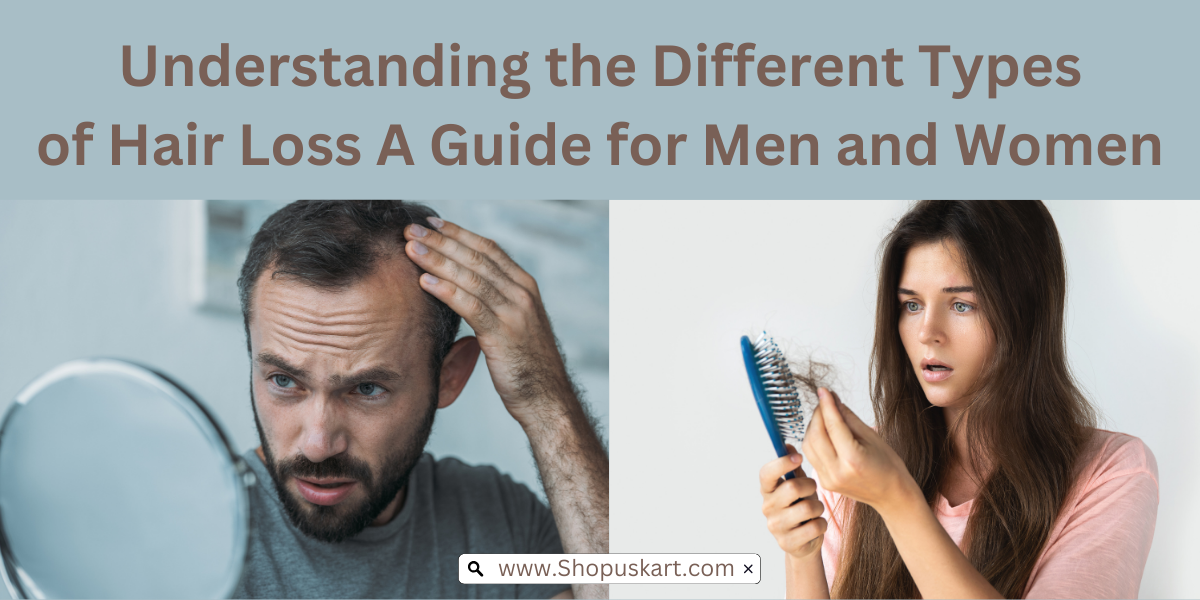


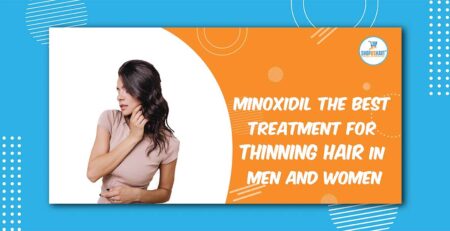
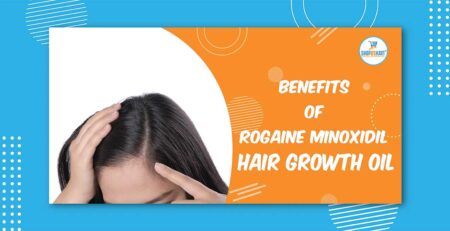

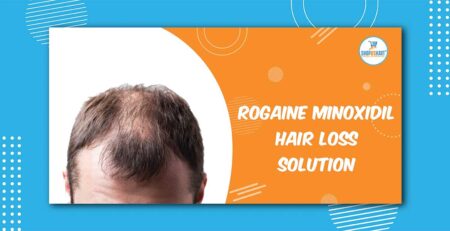


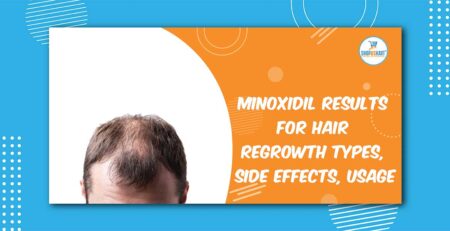

Leave a Reply